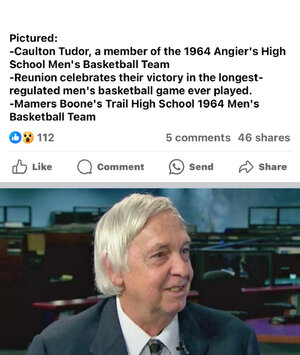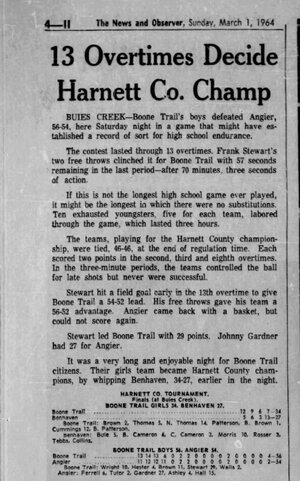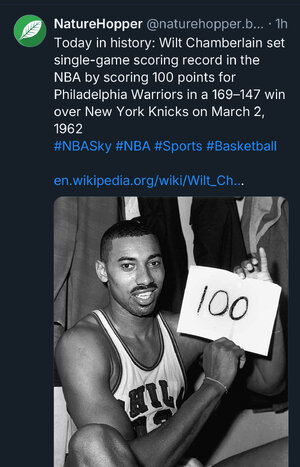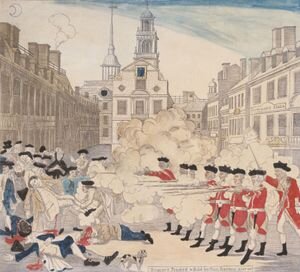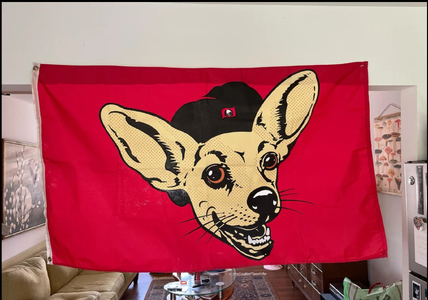So, no one on either team could shoot well.
Navigation
Install the app
How to install the app on iOS
Follow along with the video below to see how to install our site as a web app on your home screen.
Note: This feature may not be available in some browsers.
More options
You are using an out of date browser. It may not display this or other websites correctly.
You should upgrade or use an alternative browser.
You should upgrade or use an alternative browser.
This Date in History | Six Regulators Hanged
- Thread starter donbosco
- Start date
- Replies: 766
- Views: 15K
- Off-Topic
donbosco
Inconceivable Member
- Messages
- 3,371
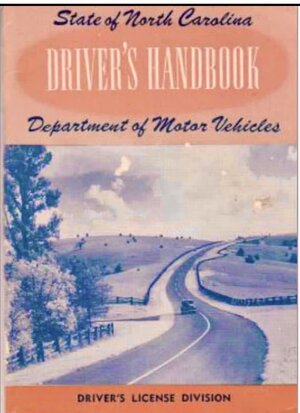
Missed this one. Here’s a story.
In #Bonlee #DeepChatham growing up it was pretty common to see a sub-16 year old out on the highway driving a tractor. But then my Elementary School (Grades 1 through 8 had student parking — think about THAT for a minute). The roads down that way were narrow with no shoulder in those days — just the ditch on either side. Drivers either poked along or dreamed of NASCAR fame. Throw in teen-age tractor pilots and rampaging chicken trucks and the highway was downright treacherous.
I was awarded my first speeding ticket at 16, topping a rise on Old 421 doing 80 mph only to meet John Law eyeball to eyeball. I totaled my car the next year - on an icy day in front of my high school just as school let out. There were four of my classmates in the car with me. No one was much hurt. Other students wrecked and rolled their cars and trucks regularly. Sometimes kids and young adults died.
Car culture was big, and souped up engines, mag wheels, and jacked up chasis were all over. Muscle cars were ubiquitous and LOUD was the sound of main street in Siler City and Sanford on Friday and Saturday night. Gas shortage be damned! CB radios eventually appeared — aiding the concerted effort to thwart the State Patrol and the Sheriff. Racing happened despite the admonitions and best efforts of long-time Driver’s Ed teacher (and legendary baseball coach) Ronald Scott.
But cars were needed in that neck of the woods - there was no public transportation whatsoever - no one thought about it. There were school buses — and they were mainly driven by high school students! Only little kids rode the bus anyway. Imagine the roads feeding into a country high school about 7:45 on a weekday morning filled as they were with hot rods — It’s a true wonder more didn’t die.
I don’t know what’s it is like these days on the roads around Bonlee, Goldston, Bennett, and Bear Creek. Last I saw it seemed that Big Trucks had taken over from the race cars. Maybe that means those kids are armored up and air-bagged sufficiently that fatalities are low. I doubt, however, that the roads are any wider in most of #DeepChatham nor are the temptations, necessities, and distances to drive reduced one whit.
#OTD (Feb. 28) in 1935 the NC General Assembly passed a law requiring a Driver’s License to operate “any rubber-tired vehicle propelled or drawn by any power other than muscular” on a public road. From the start the age was 16 to get that first license. Tractors were exempt. Testing began in ‘48. Driver’s Licensing Began
- Messages
- 1,102
For the past at least 20 years I have bought a dozen Dr. Seuss books for Toys for Tots come Xmas time.
Dr. Seuss (born March 2, 1904, Springfield, Massachusetts, U.S.—died September 24, 1991, La Jolla, California) was an American writer and illustrator of immensely popular children’s books noted for their nonsense words, playful rhymes, and unusual creatures.
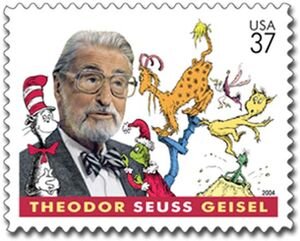
After graduating from Dartmouth College (B.A., 1925), Geisel did postgraduate studies at Lincoln College, Oxford, and at the Sorbonne. He subsequently began working for Life, Vanity Fair, and other publications as an illustrator and humorist. In addition, he found success in advertising, providing illustrations for a number of campaigns. Geisel was especially noted for his work on ads for Flit insect repellent. Some of his characters later appeared in his children’s works.
After illustrating a series of humor books, Geisel decided to write a children’s book, which was reportedly rejected by nearly 30 publishers. After his chance meeting with a friend who was an editor at Vanguard Press, And to Think That I Saw It on Mulberry Street was finally released in 1937. The work centers on a young boy who transforms his ordinary walk home from school into a fantastical story. Later, however, he describes only the facts of his walk to his father, who frowns on the boy’s imaginative nature. Geisel used the pen name Dr. Seuss, planning to publish novels under his surname; the Dr. was a tongue-in-cheek reference to his uncompleted doctorate degree. However, his first book for adults, The Seven Lady Godivas (1939), fared poorly, and thereafter he focused on children’s books, which he preferred. (In many profiles and articles, he is often quoted as having said, “Adults are obsolete children, and the hell with them.” In 1986 he published a humor book on aging “for readers of all ages,” You’re Only Old Once! A Book for Obsolete Children.)
After publishing several more children’s works, Geisel released Horton Hatches the Egg in 1940. With it, he introduced the features that would come to define his books: a unique brand of humor, playful use of words, and outlandish characters. It centers on an elephant who is duped into sitting on the egg of a bird who goes on vacation. Despite various hardships, Horton refuses to leave: “I meant what I said, and I said what I meant. An elephant’s faithful one hundred percent!” In the end, he is rewarded when the egg hatches, and a creature with bird wings and an elephant’s head emerges.
During World War II Geisel’s focus shifted to politics. In the early 1940s he was an editorial cartoonist at PM magazine in New York City. Although his political cartoons pointedly critiqued American isolationism and “America First” attitudes, some of them also contained xenophobic and sexist tropes and racist depictions of Asians (in particular, Japanese people), Arabs, and Africans. Geisel then served (1943–46) in the U.S. Army, where he was assigned to the documentary division. In 1945 he wrote Your Job in Germany, which was directed by Frank Capra; it was later remade as the Academy Award-winning Hitler Lives (1945), though Geisel was not credited. After his service ended, he continued to make films. With his first wife, Helen Palmer Geisel, he wrote the Oscar-winning documentary feature Design for Death (1947). His animated cartoon Gerald McBoing-Boing (1950) also won an Academy Award.
In 1947 Geisel returned to children’s books with McElligot’s Pool, about a boy who imagines a fantastical marine world while fishing. The work was especially noted for Geisel’s inventive creatures, which would come to populate his later stories. In addition, he continued to use his whimsical rhymes to convey important life lessons. In Horton Hears a Who! (1954), the loyal pachyderm returns to protect a tiny speck of a planet known as Whoville. A discussion about minority rights and the value of all individuals, the work features Horton repeating “a person’s a person, no matter how small.” The book’s message was inspired by Geisel’s visit to Japan in 1953, where the devastation of the 1945 atomic bombing of Hiroshima deeply affected him and caused him to retract some of his previous anti-Japanese views. He also published The Sneetches (1953), which tackles racism.
In 1957 Geisel published two of his most popular works: The Cat in the Hat and How the Grinch Stole Christmas!. The former features a mischievous talking cat who entertains two bored children on a rainy day, while the latter introduces the Scrooge-like Grinch, who wants to ruin Christmas in Whoville but ultimately discovers that the holiday is more than just its material trappings. How the Grinch Stole Christmas! was later adapted (1966) for television, and it became a holiday staple. It was also made into a feature film (2000), a Broadway musical (2006), and an animated movie (2018).
In 1958 Geisel founded Beginner Books, Inc., which in 1960 became a division of Random House. He subsequently wrote a number of books for beginning readers, notably One Fish Two Fish Red Fish Blue Fish (1960), Green Eggs and Ham (1960), Hop on Pop (1963), and Fox in Socks (1965). They—along with his other works—went far beyond the traditional, and often boring, primers and were valued for their contribution to the education of children. During this period, Geisel also wrote The Lorax (1971), in which he expressed concern for the environment. The cautionary tale centers on a businessman who destroys a forest of Truffula trees—despite the protest of the Lorax, who speaks up because “the trees have no tongues”—and, when left with a desolate landscape, laments the damage he has caused. Geisel’s later notable books include the inspirational Oh, the Places You’ll Go! (1990), which became a popular graduation gift to students.
In 1984 Geisel received a Pulitzer Prize “for his special contribution over nearly half a century to the education and enjoyment of America’s children and their parents.” The honor underscored the immense popularity of his works, which were perennial best sellers. According to various reports, by the early 21st century more than 600 million copies of Dr. Seuss books had been sold worldwide.
Dr. Seuss (born March 2, 1904, Springfield, Massachusetts, U.S.—died September 24, 1991, La Jolla, California) was an American writer and illustrator of immensely popular children’s books noted for their nonsense words, playful rhymes, and unusual creatures.

After graduating from Dartmouth College (B.A., 1925), Geisel did postgraduate studies at Lincoln College, Oxford, and at the Sorbonne. He subsequently began working for Life, Vanity Fair, and other publications as an illustrator and humorist. In addition, he found success in advertising, providing illustrations for a number of campaigns. Geisel was especially noted for his work on ads for Flit insect repellent. Some of his characters later appeared in his children’s works.
After illustrating a series of humor books, Geisel decided to write a children’s book, which was reportedly rejected by nearly 30 publishers. After his chance meeting with a friend who was an editor at Vanguard Press, And to Think That I Saw It on Mulberry Street was finally released in 1937. The work centers on a young boy who transforms his ordinary walk home from school into a fantastical story. Later, however, he describes only the facts of his walk to his father, who frowns on the boy’s imaginative nature. Geisel used the pen name Dr. Seuss, planning to publish novels under his surname; the Dr. was a tongue-in-cheek reference to his uncompleted doctorate degree. However, his first book for adults, The Seven Lady Godivas (1939), fared poorly, and thereafter he focused on children’s books, which he preferred. (In many profiles and articles, he is often quoted as having said, “Adults are obsolete children, and the hell with them.” In 1986 he published a humor book on aging “for readers of all ages,” You’re Only Old Once! A Book for Obsolete Children.)
After publishing several more children’s works, Geisel released Horton Hatches the Egg in 1940. With it, he introduced the features that would come to define his books: a unique brand of humor, playful use of words, and outlandish characters. It centers on an elephant who is duped into sitting on the egg of a bird who goes on vacation. Despite various hardships, Horton refuses to leave: “I meant what I said, and I said what I meant. An elephant’s faithful one hundred percent!” In the end, he is rewarded when the egg hatches, and a creature with bird wings and an elephant’s head emerges.
During World War II Geisel’s focus shifted to politics. In the early 1940s he was an editorial cartoonist at PM magazine in New York City. Although his political cartoons pointedly critiqued American isolationism and “America First” attitudes, some of them also contained xenophobic and sexist tropes and racist depictions of Asians (in particular, Japanese people), Arabs, and Africans. Geisel then served (1943–46) in the U.S. Army, where he was assigned to the documentary division. In 1945 he wrote Your Job in Germany, which was directed by Frank Capra; it was later remade as the Academy Award-winning Hitler Lives (1945), though Geisel was not credited. After his service ended, he continued to make films. With his first wife, Helen Palmer Geisel, he wrote the Oscar-winning documentary feature Design for Death (1947). His animated cartoon Gerald McBoing-Boing (1950) also won an Academy Award.
In 1947 Geisel returned to children’s books with McElligot’s Pool, about a boy who imagines a fantastical marine world while fishing. The work was especially noted for Geisel’s inventive creatures, which would come to populate his later stories. In addition, he continued to use his whimsical rhymes to convey important life lessons. In Horton Hears a Who! (1954), the loyal pachyderm returns to protect a tiny speck of a planet known as Whoville. A discussion about minority rights and the value of all individuals, the work features Horton repeating “a person’s a person, no matter how small.” The book’s message was inspired by Geisel’s visit to Japan in 1953, where the devastation of the 1945 atomic bombing of Hiroshima deeply affected him and caused him to retract some of his previous anti-Japanese views. He also published The Sneetches (1953), which tackles racism.
In 1957 Geisel published two of his most popular works: The Cat in the Hat and How the Grinch Stole Christmas!. The former features a mischievous talking cat who entertains two bored children on a rainy day, while the latter introduces the Scrooge-like Grinch, who wants to ruin Christmas in Whoville but ultimately discovers that the holiday is more than just its material trappings. How the Grinch Stole Christmas! was later adapted (1966) for television, and it became a holiday staple. It was also made into a feature film (2000), a Broadway musical (2006), and an animated movie (2018).
In 1958 Geisel founded Beginner Books, Inc., which in 1960 became a division of Random House. He subsequently wrote a number of books for beginning readers, notably One Fish Two Fish Red Fish Blue Fish (1960), Green Eggs and Ham (1960), Hop on Pop (1963), and Fox in Socks (1965). They—along with his other works—went far beyond the traditional, and often boring, primers and were valued for their contribution to the education of children. During this period, Geisel also wrote The Lorax (1971), in which he expressed concern for the environment. The cautionary tale centers on a businessman who destroys a forest of Truffula trees—despite the protest of the Lorax, who speaks up because “the trees have no tongues”—and, when left with a desolate landscape, laments the damage he has caused. Geisel’s later notable books include the inspirational Oh, the Places You’ll Go! (1990), which became a popular graduation gift to students.
In 1984 Geisel received a Pulitzer Prize “for his special contribution over nearly half a century to the education and enjoyment of America’s children and their parents.” The honor underscored the immense popularity of his works, which were perennial best sellers. According to various reports, by the early 21st century more than 600 million copies of Dr. Seuss books had been sold worldwide.
- Messages
- 1,223
Wilt said that often people would come up to him and claim they were "in the stands" that night in Madison Square Garden when he scored 100. Wilt said he would just smile and thank them for their support without mentioning the game was played in Hersey, PA
donbosco
Inconceivable Member
- Messages
- 3,371
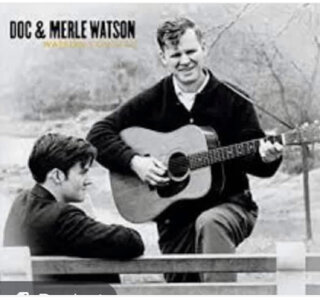
#OTD in 1923 Doc Watson was born in Deep Gap, Watauga County, NC. Blind from a childhood eye infection, he attended Gov Morehead School in Raleigh. Musically inclined early, the guitar became his primary instrument-early on he adapted fast fiddle parts with his unique style. The Folk Revival of ‘60s brought him into the light and to the world. Later his son, Merle, joined him. Doc Watson passed in 2012 but a renowned music festival, named Merlefest after his son who pre-deceased him, carries on the music. Guitar Virtuoso “Doc” Watson—A Late Bloomer
When I moved to Boone in the early ‘80s I was fortunate that one of the first people that I met was Merle Watson. It was a fluke — a friend of a friend of a friend introduced us. After that, on occasion he stopped by when I was tending at the Tijuana Fats’ in Blowing Rock, sat at my bar, and had a Dos Equis or two. Those mountains were full of music in those days and by way of that connection I heard some incredible front porch playing by the likes of Merle and friends of his like T. Michael Coleman, Gove Scrivenor, Jack Lawrence, and Joe Smothers - regulars up in the wide and high expanse of Watauga and Avery.
I went to a BBQ joint pretty often back then (the early 1980s) called ‘The Woodlands.’ Butch and Gina ran the place and the food was good and the music tended to match it. Phil Stinson on the piano singing tunes that we all knew was probably my favorite thing about the place but the Q was pretty tasty too. P.B. Scott’s music hall was nearby and among others of lesser renown I caught B.B. King and The Nitty Gritty Dirt Band there before its rude and untimely demise.
I met Doc during that time as well. I probably only had a couple of conversations with him and those only light, pre-show ones. I was kind of awe-struck really. His voice and his presence were big and intense and precise and he was generally friendly though busy and very professional. He clearly had his Way. Showtime was SHOWtime.
Last edited:
donbosco
Inconceivable Member
- Messages
- 3,371
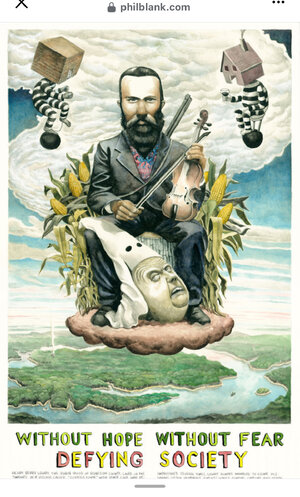
#OTD (March 3) in 1865 Confederate Home Guard captured and executed Allen (father) and William (son) Lowry. The Lowrys were Lumbee and entangled with a gang of resistors to Rebel conscription and forced labor. The “Lowry Gang” was led by Allen Lowry’s son Henry Berry Lowry. Over the next seven years the resistance continued and the gang became the scourge of whites and heroes to The Lumbee. Henry Berry gained a reputation as “Robin Hood come again” in the press of the day.
(Feb. 16) 1872 Lumbee Legend Henry Berry Lowry and accomplices made their last raid in Robeson Cty, taking $28K. He disappeared 4 days later and was never publicly heard from again. The story is complex & debated. Start reading here: Tar heel junior historian [2000 : spring, v.39 : no.2] - North Carolina Digital Collections
(Image is a painting by Phil Blank after a photo of Lowry - which is also spelled Lowrie.
- Messages
- 1,102
Posted in music thread some time ago. In 5th or 6th grade alll us kids went outside and sat in the grass where we watchd and listened to a blind guy sing. Froggy Went a Courtin was the big hit..
#OTD in 1923 Doc Watson was born in Deep Gap, Watauga County, NC. Blind from a childhood eye infection, he attended Gov Morehead School in Raleigh. Musically inclined early, the guitar became his primary instrument-early on he adapted fast fiddle parts with his unique style. The Folk Revival of ‘60s brought him into the light and to the world. Later his son, Merle, joined him. Doc Watson passed in 2012 but a renowned music festival, named Merlefest after his son who pre-deceased him, carries on the music. Guitar Virtuoso “Doc” Watson—A Late Bloomer
When I moved to Boone in the early ‘80s I was fortunate that one of the first people that I met was Merle Watson. It was a fluke — a friend of a friend of a friend introduced us. After that, on occasion he stopped by when I was tending at the Tijuana Fats’ in Blowing Rock, sat at my bar, and had a Dos Equis or two. Those mountains were full of music in those days and by way of that connection I heard some incredible front porch playing by the likes of Merle and friends of his like T. Michael Coleman, Gove Scrivenor, Jack Lawrence, and Joe Smothers - regulars up in the wide and high expanse of Watauga and Avery.
I went to a BBQ joint pretty often back then (the early 1980s) called ‘The Woodlands.’ Butch and Gina ran the place and the food was good and the music tended to match it. Phil Stinson on the piano singing tunes that we all knew was probably my favorite thing about the place but the Q was pretty tasty too. P.B. Scott’s music hall was nearby and among others of lesser renown I caught B.B. King and The Nitty Gritty Dirt Band there before its rude and untimely demise.
I met Doc during that time as well. I probably only had a couple of conversations with him and those only light, pre-show ones. I was kind of awe-struck really. His voice and his presence were big and intense and precise and he was generally friendly though busy and very professional. He clearly had his Way. Showtime was SHOWtime.
Last edited:
donbosco
Inconceivable Member
- Messages
- 3,371
Re: Doc Watson - Merle once told me about taking bus trips with Doc when he was in his early teens to places like Chicago and New York City in search of blues legends. He said those journeys took them into some inner city situations that scared him to death but Doc was determined. He also said that if Doc could have seen the world around them he might have reconsidered. But the good son was his father’s eyes and persevered. They also found what/who they were looking for often and he said that once Doc pulled out his guitar all was well.
- Messages
- 1,102
1934. NAmerican bank robber John Dillinger made a daring escape from prison at Crown Point, Indiana.
John Dillinger (born June 22, 1903, Indianapolis, Indiana, U.S.—died July 22, 1934, Chicago, Illinois) was an American criminal who was perhaps the most famous bank robber in U.S. history, known for a series of robberies and escapes from June 1933 to July 1934.
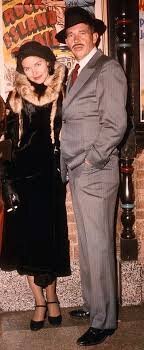
Dillinger, who was born in Indianapolis, had a difficult childhood. When he was three years old, his mother died, and he later had a strained relationship with his stepmother. Often in trouble, he eventually dropped out of school. The family subsequently settled on a farm in nearby Mooresville, but the relocation had little effect on Dillinger’s behaviour. In 1923 he joined the navy and served on the USS Utah before deserting after only a few months. Dillinger then returned to Indiana. In September 1924 he was caught in the foiled holdup of a Mooresville grocer, and he served much of the next decade in Indiana State Prison. While incarcerated, he learned the craft of bank robbery from fellow inmates. Upon parole on May 10, 1933, he turned his knowledge to profit, robbing (with one to four confederates) five Indiana and Ohio banks in four months and gaining his first notoriety as a daring, sharply dressed gunman.
In September 1933 Dillinger was captured and jailed in Ohio. However, the following month he was rescued by five former convict pals whose own escape from Indiana State Prison he had earlier financed and plotted; a sheriff was killed during the incident. Dillinger and his gang next robbed banks in Indiana and Wisconsin and fled south to Florida and then to Tucson, Arizona, where they were discovered and arrested by local police. Dillinger was extradited to Indiana and lodged in the Crown Point jail, which was considered escape-proof. However, on March 3, 1934, he executed his most-celebrated breakout. With a razor and a piece of wood, he carved a fake pistol, blackened it with shoe polish, and used it to force his way past a dozen guards to freedom, singing as he left, “I’m heading for the last roundup.” Dillinger then drove the sheriff’s car to Chicago. By taking a stolen vehicle across state lines, he committed a federal offense, and the FBI launched its own manhunt.
There followed more bank robberies with new confederates, notably Baby Face Nelson. Over the course of Dillinger’s yearlong crime spree, several people were killed by his gang, and he barely escaped FBI entrapments and shootouts in Minnesota and Wisconsin. He eventually made his way to Chicago, where he reportedly had plastic surgery to alter his appearance. His end came through a trap set up by the FBI, Indiana police, and Anna Sage (alias of Ana Cumpanas), a brothel madam who knew Dillinger’s girlfriend. Sage informed law officers that she and the couple would be seeing a movie on the night of July 22, 1934. The trio ultimately went to the Biograph Theater. Although Sage was later described as “the woman in red,” she was actually wearing an orange skirt to make herself easily visible. After a showing of the crime drama Manhattan Melodrama (1934), Dillinger emerged to find FBI agents waiting for him. He attempted to escape but was shot to death in the alley.
Some researchers have claimed that another man, not Dillinger, was killed outside the Biograph and that Dillinger’s allies accomplished a hoax on the FBI, leaving him free to disappear. However, fingerprints from the body matched those taken from Dillinger in previous arrests.
John Dillinger (born June 22, 1903, Indianapolis, Indiana, U.S.—died July 22, 1934, Chicago, Illinois) was an American criminal who was perhaps the most famous bank robber in U.S. history, known for a series of robberies and escapes from June 1933 to July 1934.

Dillinger, who was born in Indianapolis, had a difficult childhood. When he was three years old, his mother died, and he later had a strained relationship with his stepmother. Often in trouble, he eventually dropped out of school. The family subsequently settled on a farm in nearby Mooresville, but the relocation had little effect on Dillinger’s behaviour. In 1923 he joined the navy and served on the USS Utah before deserting after only a few months. Dillinger then returned to Indiana. In September 1924 he was caught in the foiled holdup of a Mooresville grocer, and he served much of the next decade in Indiana State Prison. While incarcerated, he learned the craft of bank robbery from fellow inmates. Upon parole on May 10, 1933, he turned his knowledge to profit, robbing (with one to four confederates) five Indiana and Ohio banks in four months and gaining his first notoriety as a daring, sharply dressed gunman.
In September 1933 Dillinger was captured and jailed in Ohio. However, the following month he was rescued by five former convict pals whose own escape from Indiana State Prison he had earlier financed and plotted; a sheriff was killed during the incident. Dillinger and his gang next robbed banks in Indiana and Wisconsin and fled south to Florida and then to Tucson, Arizona, where they were discovered and arrested by local police. Dillinger was extradited to Indiana and lodged in the Crown Point jail, which was considered escape-proof. However, on March 3, 1934, he executed his most-celebrated breakout. With a razor and a piece of wood, he carved a fake pistol, blackened it with shoe polish, and used it to force his way past a dozen guards to freedom, singing as he left, “I’m heading for the last roundup.” Dillinger then drove the sheriff’s car to Chicago. By taking a stolen vehicle across state lines, he committed a federal offense, and the FBI launched its own manhunt.
There followed more bank robberies with new confederates, notably Baby Face Nelson. Over the course of Dillinger’s yearlong crime spree, several people were killed by his gang, and he barely escaped FBI entrapments and shootouts in Minnesota and Wisconsin. He eventually made his way to Chicago, where he reportedly had plastic surgery to alter his appearance. His end came through a trap set up by the FBI, Indiana police, and Anna Sage (alias of Ana Cumpanas), a brothel madam who knew Dillinger’s girlfriend. Sage informed law officers that she and the couple would be seeing a movie on the night of July 22, 1934. The trio ultimately went to the Biograph Theater. Although Sage was later described as “the woman in red,” she was actually wearing an orange skirt to make herself easily visible. After a showing of the crime drama Manhattan Melodrama (1934), Dillinger emerged to find FBI agents waiting for him. He attempted to escape but was shot to death in the alley.
Some researchers have claimed that another man, not Dillinger, was killed outside the Biograph and that Dillinger’s allies accomplished a hoax on the FBI, leaving him free to disappear. However, fingerprints from the body matched those taken from Dillinger in previous arrests.
donbosco
Inconceivable Member
- Messages
- 3,371
William Rufus DeVane King was sworn in on this day in 1853 as Vice President to Franklin Pierce (1853-1857). The swearing in happened in Havana, the only time an executive officer has been sworn in outside of the United States. King was born in Sampson County and was a graduate of UNC. His given nickname from Andrew Jackson was "Miss Nancy."
The Rest Of The Story: Senator, slave owner and quite possibly gay, Alabama's William Rufus King was country's 13th VP
The Rest Of The Story: Senator, slave owner and quite possibly gay, Alabama's William Rufus King was country's 13th VP
donbosco
Inconceivable Member
- Messages
- 3,371
On this day in 1943 the Cardinal was designated the North Carolina State Bird. The Tar Heel State has been without a state bird for a decade. There's more though...in 1933 the North Carolina Women's Club held a contest and the Carolina Chickadee was chosen for the honor but a week after the General Assembly's decree the Chickadee was banished from its post for fear that Sub Carolinians and Virginians might latch onto that bird's "other" name and dub North Carolina the Tom-Tit State.

 waltermagazine.com
waltermagazine.com

Not a Smooth Flight: The Story of Our State Bird - WALTER Magazine
By 1943, North Carolina was one of only two states without a state bird — here’s how the Northern cardinal got the nod.
 waltermagazine.com
waltermagazine.com
- Messages
- 1,102
Pretty big deal. Lasted 236 years. (Some may ague not). Will it survive this year?
1789 The U.S. Constitution went into effect as the governing law of the United States, the date having been established by Congress.
Constitution of the United States of America, the fundamental law of the U.S. federal system of government and a landmark document of the Western world. The oldest written national constitution in use, the Constitution defines the principal organs of government and their jurisdictions and the basic rights of citizens. (For a list of amendments to the U.S. Constitution, see below.)

 www.archives.gov
www.archives.gov
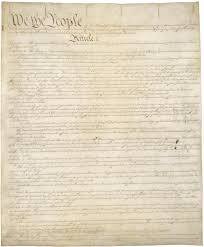
1789 The U.S. Constitution went into effect as the governing law of the United States, the date having been established by Congress.
Constitution of the United States of America, the fundamental law of the U.S. federal system of government and a landmark document of the Western world. The oldest written national constitution in use, the Constitution defines the principal organs of government and their jurisdictions and the basic rights of citizens. (For a list of amendments to the U.S. Constitution, see below.)

The Constitution of the United States: A Transcription
[get-content name="print-page-left" include-tag="false" /] Note: The following text is a transcription of the Constitution as it was inscribed by Jacob Shallus on parchment (the document on display in the Rotunda at the National Archives Museum.) The spelling and punctuation reflect the original.

donbosco
Inconceivable Member
- Messages
- 3,371
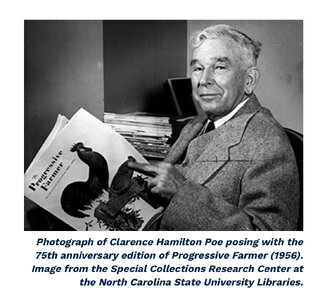
“Apartheid amendment fails to catch on
On this day in 1915: The N.C. Senate rejects Clarence Poe’s plan for a “Great Rural Civilization.”Fearing that the migration of young people into the already crowded cities was undermining society, Poe — the influential editor of the Progressive Farmer — drafted a plan that strangely foreshadowed Floyd McKissick’s ill-fated Soul City experiment of the 1970s.
While visiting the British Isles in 1912, Poe had interviewed a white South African, who persuaded him that apartheid offered whites the best opportunity to help blacks.
Framed as an amendment to the state constitution, Poe’s plan empowered voters in a rural district to prohibit land sales to persons of the minority race. Although this provision would not force anyone to leave, Poe believed that ultimately the countryside would be dotted with quiet, pastoral villages, either all-white or all-black.
Although Poe enlisted such influential allies as Josiah Bailey, later a U.S. senator, and Julian Carr, the Bull Durham magnate, his plan stirred hornets’ nests of protest across the South.
After the 1915 General Assembly, more concerned with the World War raging in Europe, votes down the proposed amendment, the “Great Rural Civilization” will not be heard of again.”
Poe was from Chatham County and my father knew him, though not well. He was a conundrum and quite a good example of the ‘Progressive’ Paradox that could be NC in the early years of the 20th century.
- Messages
- 1,102
Iconic photo of Che Guevara taken
Moments before he was shot to death by a soldier of the Bolivian government, the revolutionary Ernesto “Che” Guevara told his executioner, “Shoot, coward! You are only going to kill a man!” Guevara died a short time later, on October 9, 1967 at the age of 39, but he was correct in his assertion that this would not be the end of his legacy. Today, that legacy almost always takes the form of a single photograph, Guerrillero Heroico, which some have called the most famous photograph in the world.

That photo was taken on March 5, 1960, seven years before Guevara’s death, at a funeral for workers killed in an explosion in a Cuban port that Fidel Castro’s revolutionary government blamed on the Americans. Guevara, a general in the revolution and the intellectual heavyweight of Castro’s regime, looked on as Castro delivered his fiery funeral oration. For about thirty seconds, he stepped to the front of a crowd near Castro’s rostrum, into the view of newspaper photographer Alberto Díaz Gutiérrez, also known as Alberto Korda. Korda snapped two shots of Guevara, his face resolute and his long hair flowing from under his trademark beret, before Guevara retreated back into the crowd. Perhaps due to his background as a fashion photographer, Korda took a liking to one of the images and cropped it into a portrait, even though the newspaper La Revolución declined to use it.
For several years, the now-iconic photo remained nothing more than a personal favorite of the man who took it. Korda named the picture Guerrillero Heroico—“Heroic Guerrilla Warrior”—and hung it on his wall, occasionally handing out copies to guests. It was not until 1967 that the public would first see the image, which appeared in the magazine Paris Match alongside an article about Latin American guerilla movements.
Guevara was killed in October of that year, captured while fighting with Bolivian revolutionaries. During his memorial service in Havana, an enormous print of Guerrillero Heroico was hung over the façade of the Ministry of the Interior. The service marked Che’s canonization as a martyr of global revolution, as well as the ascendance of Korda’s image as an icon of rebellion.
The following year the image of Guevara went viral. It appeared on the cover of a copy of Guevara's memoirs, published in Italy. It was also used as the cover of a literary journal advertised on the New York City subway. In the same year, Irish artist Jim Fitzpatrick created a stylized version of the image, setting a black-and-white Guevara against a red background, and distributed it as widely as he could to honor Guevara’s legacy. A poster bearing Fitzpatrick’s image was shown at the Arts Laboratory in London. 1968 was a year of upheaval across the world, and Guevara's image featured prominently during the student riots that swept France in May, the populist protests of Italy’s “Hot Autumn” and the nonviolent, surrealist-inspired demonstrations of the Dutch “Provos.”
In addition to being held aloft at protests or hung in the homes of his admirers, Guevara's image has become popular as a fashion statement, adorning t-shirts and posters wherever counterculture is revered. Rage Against the Machine used a modified version of the image as the cover for their 1993 single “Bombtrack,” and Madonna referenced it on the cover of her 2003 album American Life. Korda succeeded in stopping Smirnoff Vodka from using his photo in one of its campaigns, but it has appeared in countless other advertisements, including ads by Nike and a campaign by Taco Bell which featured a Chihuahua in revolutionary garb.
Attachments
- Messages
- 1,102
Lots of good stuff today. Going wiith this. Everyone I know who visited came away with "much smaller than I thought".
Alamo, 18th-century Franciscan mission in San Antonio, Texas, U.S., that was the site of a historic resistance effort by a small group of determined fighters for Texan independence (1836) from Mexico.
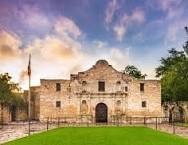
The building was originally the chapel of the Mission San Antonio de Valero, which had been founded between 1716 and 1718 by Franciscans. Before the end of the century, the mission had been abandoned and the buildings fell into partial ruin. After 1801 the chapel was occupied sporadically by Spanish troops. Apparently, it was during that period that the old chapel became popularly known as “the Alamo” because of the grove of cottonwood trees in which it stood.
December 1835, at the opening of the Texas Revolution (War of Texas Independence), a detachment of Texan volunteers, many of whom were recent arrivals from the United States, drove a Mexican force from San Antonio and occupied the Alamo. Some Texan leaders—including Sam Houston, who had been named commanding general of the Texas army the month before—counseled the abandonment of San Antonio as impossible to defend with the small body of troops available, but the rugged bunch of volunteers at the Alamo refused to retire from their exposed position.
On February 23, 1836, a Mexican army, variously estimated at 1,800–6,000 men and commanded by Gen. Antonio López de Santa Anna, arrived from south of the Rio Grande and immediately began a siege of the Alamo. Estimates of the size of the small defending force (including some later arrivals) usually vary between 183 and 189 men, though some historians believe that figure may have been larger. That force was commanded by Colonels James Bowie and William B. Travis and included the renowned frontiersman Davy Crockett. At the beginning of the siege, Travis dispatched “To the People of Texas & all Americans in the world” an impassioned letter requesting support. For 13 days the Alamo’s defenders held out, but on the morning of March 6 the Mexicans stormed through a breach in the outer wall of the courtyard and overwhelmed the Texan forces. Santa Anna had ordered that no prisoners be taken, and virtually all the defenders were slain (only about 15 persons, mostly women and children, were spared). The Mexicans suffered heavy casualties as well; credible reports suggest between 600 and 1,600 were killed and perhaps 300 were wounded.
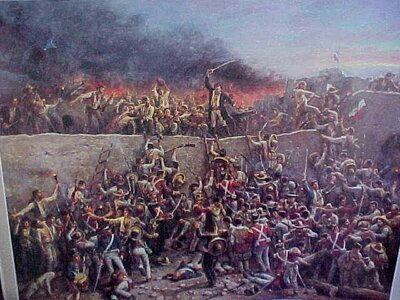
For many years after 1845—the year that Texas was annexed by the United States—the Alamo was used by the U.S. Army for quartering troops and storing supplies. In 1883 the state of Texas purchased the Alamo, and in 1903 it acquired the title to the remainder of the old mission grounds. The Alamo and its adjacent buildings have been restored and are maintained as a state historic site. They are managed on a daily basis by the Daughters of the Republic of Texas (1891), a women’s organization composed of descendants of Texan pioneers. In 2015 the Alamo along with four other 18th-century Spanish missions nearby and a historic ranch to the southeast in Floresville were collectively designated a UNESCO World Heritage site.
Alamo, 18th-century Franciscan mission in San Antonio, Texas, U.S., that was the site of a historic resistance effort by a small group of determined fighters for Texan independence (1836) from Mexico.

The building was originally the chapel of the Mission San Antonio de Valero, which had been founded between 1716 and 1718 by Franciscans. Before the end of the century, the mission had been abandoned and the buildings fell into partial ruin. After 1801 the chapel was occupied sporadically by Spanish troops. Apparently, it was during that period that the old chapel became popularly known as “the Alamo” because of the grove of cottonwood trees in which it stood.
December 1835, at the opening of the Texas Revolution (War of Texas Independence), a detachment of Texan volunteers, many of whom were recent arrivals from the United States, drove a Mexican force from San Antonio and occupied the Alamo. Some Texan leaders—including Sam Houston, who had been named commanding general of the Texas army the month before—counseled the abandonment of San Antonio as impossible to defend with the small body of troops available, but the rugged bunch of volunteers at the Alamo refused to retire from their exposed position.
On February 23, 1836, a Mexican army, variously estimated at 1,800–6,000 men and commanded by Gen. Antonio López de Santa Anna, arrived from south of the Rio Grande and immediately began a siege of the Alamo. Estimates of the size of the small defending force (including some later arrivals) usually vary between 183 and 189 men, though some historians believe that figure may have been larger. That force was commanded by Colonels James Bowie and William B. Travis and included the renowned frontiersman Davy Crockett. At the beginning of the siege, Travis dispatched “To the People of Texas & all Americans in the world” an impassioned letter requesting support. For 13 days the Alamo’s defenders held out, but on the morning of March 6 the Mexicans stormed through a breach in the outer wall of the courtyard and overwhelmed the Texan forces. Santa Anna had ordered that no prisoners be taken, and virtually all the defenders were slain (only about 15 persons, mostly women and children, were spared). The Mexicans suffered heavy casualties as well; credible reports suggest between 600 and 1,600 were killed and perhaps 300 were wounded.

For many years after 1845—the year that Texas was annexed by the United States—the Alamo was used by the U.S. Army for quartering troops and storing supplies. In 1883 the state of Texas purchased the Alamo, and in 1903 it acquired the title to the remainder of the old mission grounds. The Alamo and its adjacent buildings have been restored and are maintained as a state historic site. They are managed on a daily basis by the Daughters of the Republic of Texas (1891), a women’s organization composed of descendants of Texan pioneers. In 2015 the Alamo along with four other 18th-century Spanish missions nearby and a historic ranch to the southeast in Floresville were collectively designated a UNESCO World Heritage site.
I’d read and heard about how small the Alamo is; so, when I visited it, I had the opposite feeling - it was larger than I expected.Lots of good stuff today. Going wiith this. Everyone I know who visited came away with "much smaller than I thought".
Alamo, 18th-century Franciscan mission in San Antonio, Texas, U.S., that was the site of a historic resistance effort by a small group of determined fighters for Texan independence (1836) from Mexico.
The building was originally the chapel of the Mission San Antonio de Valero, which had been founded between 1716 and 1718 by Franciscans. Before the end of the century, the mission had been abandoned and the buildings fell into partial ruin. After 1801 the chapel was occupied sporadically by Spanish troops. Apparently, it was during that period that the old chapel became popularly known as “the Alamo” because of the grove of cottonwood trees in which it stood.
December 1835, at the opening of the Texas Revolution (War of Texas Independence), a detachment of Texan volunteers, many of whom were recent arrivals from the United States, drove a Mexican force from San Antonio and occupied the Alamo. Some Texan leaders—including Sam Houston, who had been named commanding general of the Texas army the month before—counseled the abandonment of San Antonio as impossible to defend with the small body of troops available, but the rugged bunch of volunteers at the Alamo refused to retire from their exposed position.
On February 23, 1836, a Mexican army, variously estimated at 1,800–6,000 men and commanded by Gen. Antonio López de Santa Anna, arrived from south of the Rio Grande and immediately began a siege of the Alamo. Estimates of the size of the small defending force (including some later arrivals) usually vary between 183 and 189 men, though some historians believe that figure may have been larger. That force was commanded by Colonels James Bowie and William B. Travis and included the renowned frontiersman Davy Crockett. At the beginning of the siege, Travis dispatched “To the People of Texas & all Americans in the world” an impassioned letter requesting support. For 13 days the Alamo’s defenders held out, but on the morning of March 6 the Mexicans stormed through a breach in the outer wall of the courtyard and overwhelmed the Texan forces. Santa Anna had ordered that no prisoners be taken, and virtually all the defenders were slain (only about 15 persons, mostly women and children, were spared). The Mexicans suffered heavy casualties as well; credible reports suggest between 600 and 1,600 were killed and perhaps 300 were wounded.
For many years after 1845—the year that Texas was annexed by the United States—the Alamo was used by the U.S. Army for quartering troops and storing supplies. In 1883 the state of Texas purchased the Alamo, and in 1903 it acquired the title to the remainder of the old mission grounds. The Alamo and its adjacent buildings have been restored and are maintained as a state historic site. They are managed on a daily basis by the Daughters of the Republic of Texas (1891), a women’s organization composed of descendants of Texan pioneers. In 2015 the Alamo along with four other 18th-century Spanish missions nearby and a historic ranch to the southeast in Floresville were collectively designated a UNESCO World Heritage site.
That was a problem the defenders had and why some advocated abandoning the site. The perimeter was too big for the numbers they had. This made it easier for the Mexicans to breech the wall and overwhelm the defenders.I’d read and heard about how small the Alamo is; so, when I visited it, I had the opposite feeling - it was larger than I expected.
In his autobiography, US Grant said he would have hung Santa Ana as a war criminal if he had been Sam Houston for wiping out the garrison.
Share:

